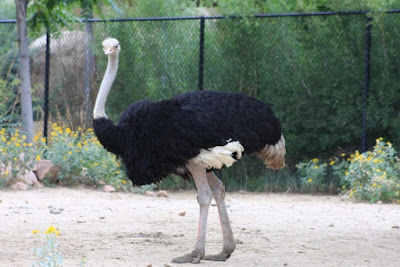Ostrich on the Run
Ever notice how there are many pictures of ostrich heads, or that full shots are from a distance? Several reasons for this. The ostrich is a hugely big bird, the head lends itself for humor, and they are dangerous in the wild. But ostriches are also fascinating.
 |
| Credit: Flickr / William Andrus (CC BY 2.0) |
Flightless birds are a puzzle for both creationists and evolutionists, but both parties agree that they probably descended from an ancestor that could fly. When Adam sinned, there were repercussions throughout all of creation. The Master Engineer quite likely front-loaded abilities and genetic information in living things so they would be able to survive in the no-longer-very-good world.
Ostriches are extremely fast runners, and can outlast speedy predators in endurance running. They also have a lethal kick. Those wings may look silly, but they are actually very useful for maneuvering. Their parenting skills are lacking by human standards, and may also be the result of the Fall of humanity.
It’s actually very easy for creatures to lose complex abilities such as flight. In certain environments, being unable to fly aids survival. For instance, on small windy islands, a creature that can’t fly is at less risk of being ‘lost at sea’ in storms and thus no longer able to reproduce. So, when a genetic accident (mutation) cripples some part of the complex flight machinery, the flightless form, which would normally be eliminated as defective, is very likely to dominate the island population. Thus, islands are common places to find flightless birds (and insects). . . .
Such devolution has nothing to do with how flight arose in the first place, which requires new, complex genetic information to arise. Even dedicated evolutionists don’t suggest that any flightless bird ever ‘re-evolved’ flight ability once lost.
You can read the full article at "The ostrich—a reminder of creation and the Fall".